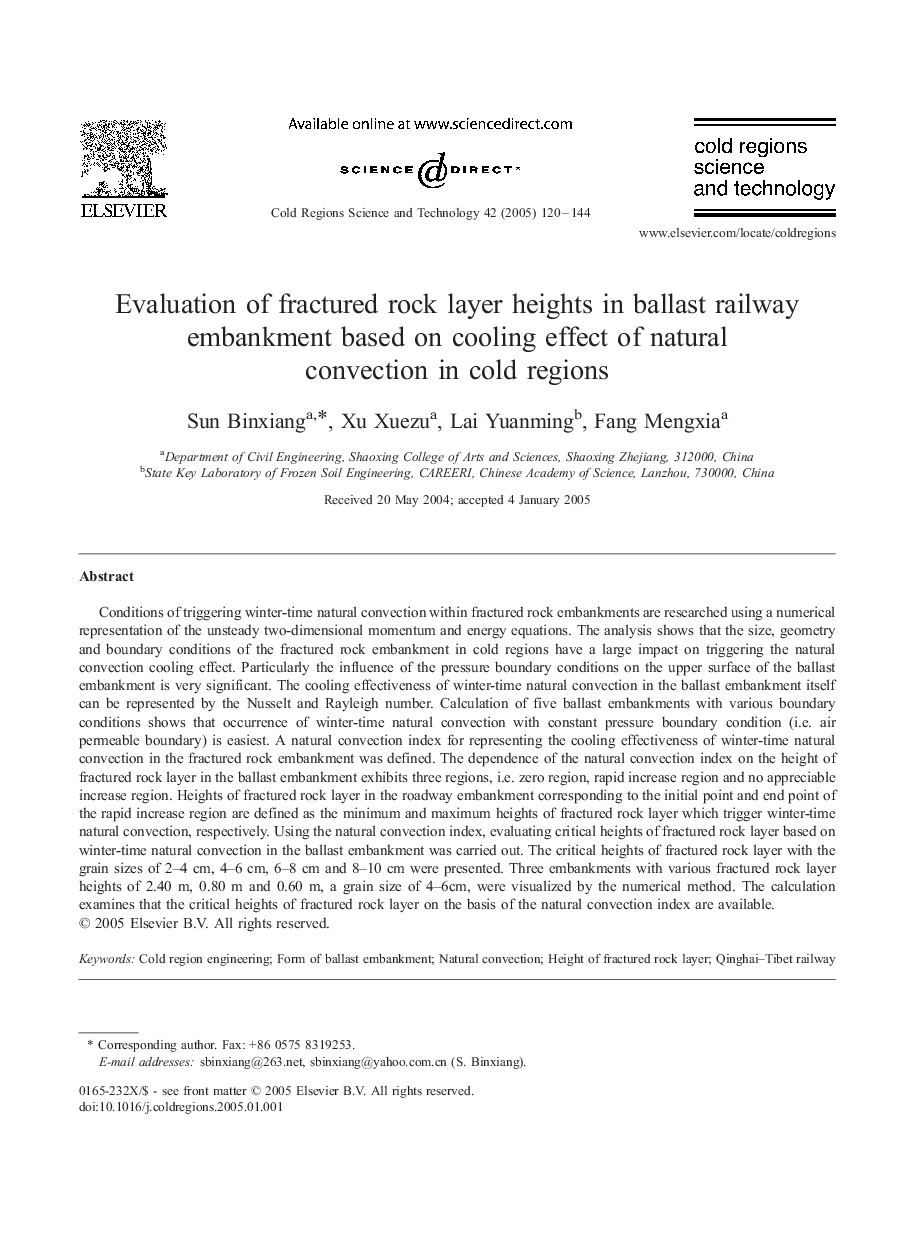| Article ID | Journal | Published Year | Pages | File Type |
|---|---|---|---|---|
| 9521543 | Cold Regions Science and Technology | 2005 | 25 Pages |
Abstract
Conditions of triggering winter-time natural convection within fractured rock embankments are researched using a numerical representation of the unsteady two-dimensional momentum and energy equations. The analysis shows that the size, geometry and boundary conditions of the fractured rock embankment in cold regions have a large impact on triggering the natural convection cooling effect. Particularly the influence of the pressure boundary conditions on the upper surface of the ballast embankment is very significant. The cooling effectiveness of winter-time natural convection in the ballast embankment itself can be represented by the Nusselt and Rayleigh number. Calculation of five ballast embankments with various boundary conditions shows that occurrence of winter-time natural convection with constant pressure boundary condition (i.e. air permeable boundary) is easiest. A natural convection index for representing the cooling effectiveness of winter-time natural convection in the fractured rock embankment was defined. The dependence of the natural convection index on the height of fractured rock layer in the ballast embankment exhibits three regions, i.e. zero region, rapid increase region and no appreciable increase region. Heights of fractured rock layer in the roadway embankment corresponding to the initial point and end point of the rapid increase region are defined as the minimum and maximum heights of fractured rock layer which trigger winter-time natural convection, respectively. Using the natural convection index, evaluating critical heights of fractured rock layer based on winter-time natural convection in the ballast embankment was carried out. The critical heights of fractured rock layer with the grain sizes of 2-4 cm, 4-6 cm, 6-8 cm and 8-10 cm were presented. Three embankments with various fractured rock layer heights of 2.40 m, 0.80 m and 0.60 m, a grain size of 4-6cm, were visualized by the numerical method. The calculation examines that the critical heights of fractured rock layer on the basis of the natural convection index are available.
Related Topics
Physical Sciences and Engineering
Earth and Planetary Sciences
Earth and Planetary Sciences (General)
Authors
Sun Binxiang, Xu Xuezu, Lai Yuanming, Fang Mengxia,
